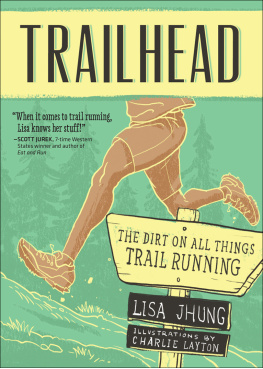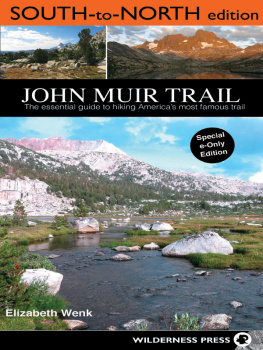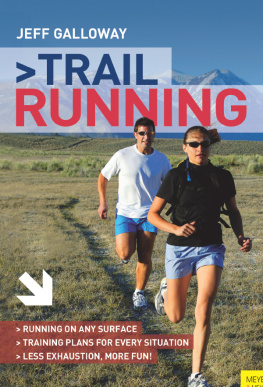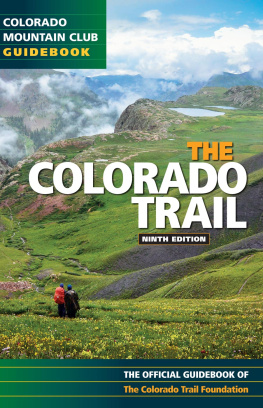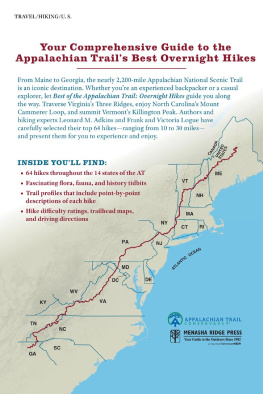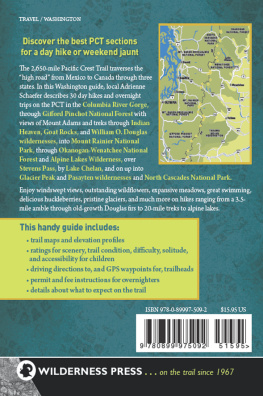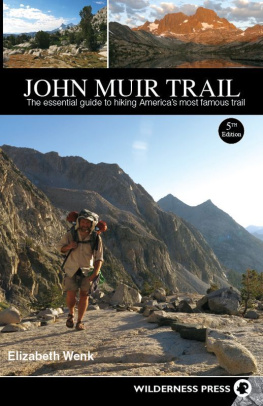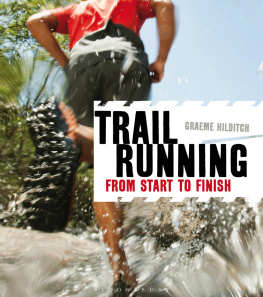
Copyright 2015 by Lisa Jhung
All rights reserved. Published in the United States of America by VeloPress, a division of Competitor Group, Inc.

3002 Sterling Circle, Suite 100
Boulder, Colorado 80301-2338 USA
(303) 440-0601 Fax (303) 444-6788
E-mail
Distributed in the United States and Canada by Ingram Publisher Services
The Library of Congress has cataloged the printed edition as follows:
Jhung, Lisa.
Trailhead: the dirt on all things trail running / Lisa Jhung.
pages cm.
Includes index.
ISBN 978-1-937715-32-8 (pbk.: alk. paper); ISBN 978-1-937716-66-0 (e-book)
1. Running. 2. TrailsRecreational use. I. Title.
GV1061.J47 2015
For information about purchasing VeloPress books, please call (800) 811-4210, ext. 2138, or visit www.velopress.com.
Illustrations and cover design by Charlie Layton
Version 3.1
A note to readers: Double-tap on illustrations and tables to enlarge them. After art is selected, you may expand or pinch your fingers to zoom in and out.
Contents

Welcome to the trail.
If youve ever been outside, you know that simply standing on a natural surface can make a person happier. Running on a traildirt, grass, sand, and suchenhances the happiness and adds the benefits of becoming healthier, stronger, fitter... more joyful, even. It grounds you.
Luckily for us, trails are everywhere.
A trail is not defined by how steep it is, how far it climbs up a mountain, how treacherous the footing, or how many miles it spans. Trails can be completely flat, rolling, or downright mountainous. They can be in the wilderness, farmland, your neighborhood, or a city park.
And a trail runner has a broad definition, too. Speeding through the hills like a mountain goat makes you a trail runner. So does hopping on a smooth dirt path and moving your feet in some motion faster than a walking or hiking pace for a couple of miles. From newbies with still-pink toenails to wily veterans who depend on pedicures for normalcy, from dedicated road runners with a longing for nature and a more forgiving surface to ultrarunners accustomed to hallucinations and gastrointestinal distress, you are all trail runners, and this book is for you.
By providing a no-nonsense (okay, a little nonsense) visual reference to everything there is to know about trail runningwhat to do when encountering a bear, or (sometimes) worse, a charging mountain biker or cantankerous hiker; what to wear to embrace the elements; how to relieve yourself on the trail without embarrassing yourself or those around you; or how to get faster or go fartherthis book will help you thrive.

What is a trail?
trail \trl\ n. (pl. s) 1. An unpaved path that goes somewhere.
A TRAIL | NOT A TRAIL |
Dirt path | Concrete path |
Rocky path | Asphalt road |
Mossy path | Sidewalk |
Rooty path | Freeway |
Dirt road | Treadmill |
Gravel path | Track |
Gravel road | Bouncy house |
Rail trail converted to dirt path | Target store (no matter how many aisles you cover) |
Sandy beach |
Grassy field |
The unpaved path refers to any surface not covered in concrete, asphalt, bricks, or tiles. The goes somewhere component eliminates a treadmill, grassy sports field, or rubber track. While those venues confer some of the same physical and mental benefits as running on a trail, the goes somewhere bit of the definition is what gives you a sense of adventure.
ADVENTURE: A SLIDING SCALE
There is a sense of adventure, there is an actual adventure, and then there is an epic adventure. Trail running can sometimes be all three.

Sense of adventure. A feeling of excitement when you set out on your run, all but guaranteed on even the mellowest of trails. Im so ready to do this!
Actual adventure. A trail run offering a sense of exploration, discovery, and even a bit of apprehension. This is exciting! Can I do this?
Epic adventure. A trail run rich with excitement, challenge, endurance, and possibly crazy weather conditions. Epic adventures vary, but they all end with the same thought: That was awesome! I did this!
Adventures are out there for the taking. But not every run (or any run) has to be epic to be great. Some days you may want to just get outside and take it mellow and easy on a familiar nearby path. Regardless of where your runs fall on the sliding scale of adventure, if you want to keep your off-road running fun and safe, this book will help you plan runs wisely.
How to use this book
The 12 chapters in this book fall into six categories, each examining trail running from a different angle. Feel free to read every page twice, quote it to your running mates, and get a great kick out of the illustrations. Heck, buy a copy for each of your friends. However, there is no need to read Trailhead in order, from beginning to end. Flip through each chapter as needed. Strict order is as important in this book as it is in trail running, which is to say not very.

 WHY. Wherein we discuss what trail running does for your body and your mind.
WHY. Wherein we discuss what trail running does for your body and your mind.

 HOW. These chapters answer questions about where to go and what you need to trail run. They also discuss how to handle weather, what to wear, and how to fuel up.
HOW. These chapters answer questions about where to go and what you need to trail run. They also discuss how to handle weather, what to wear, and how to fuel up.

 SAFETY. These chapters spell out what to do if you encounter animals on your run. And they talk about basic first aid.
SAFETY. These chapters spell out what to do if you encounter animals on your run. And they talk about basic first aid.

 ETIQUETTE. This chapter discusses good behaviors for multiuse trails, including who has the right of way. It also teaches about the socially and environmentally acceptable ways to relieve yourself during a run. And ways to preserve our beloved trails.
ETIQUETTE. This chapter discusses good behaviors for multiuse trails, including who has the right of way. It also teaches about the socially and environmentally acceptable ways to relieve yourself during a run. And ways to preserve our beloved trails.

 COMPANY: This chapter weighs the pros and cons of running by yourself; with friends; with dogs, horses, or burros (for real).
COMPANY: This chapter weighs the pros and cons of running by yourself; with friends; with dogs, horses, or burros (for real).
Next page
